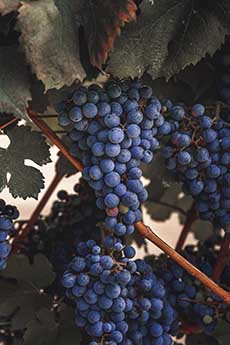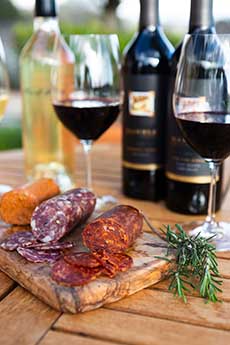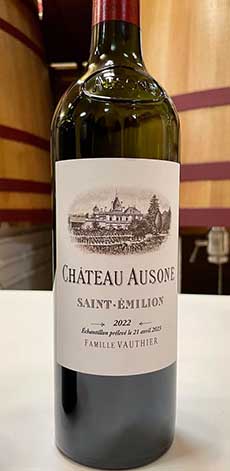Have Some Cabernet Franc On International Cabernet Franc Day
|
|
The date of International Cabernet Franc Day, December 4th, was selected because it’s the date of the passing of Cardinal Richelieu*, December 4, 1642. Why he is so honored, you’ll see in the history of Cabernet Franc, below. Cabernet Franc is one of the great red grape varieties of Bordeaux. But it doesn’t get the attention of its “neighbor” grapes, Cabernet Sauvignon and Merlot. In fact, it’s a family member. A 1997 DNA analysis revealed that Cabernet Sauvignon is the progeny of Cabernet Franc and Sauvignon Blanc. Cabernet Franc is also one of the two parents of Merlot and Carménère. Cabernet Franc is a medium-body wine: lighter-bodied than Cabernet Sauvignon but more full-bodied than Merlot. The wines are known for good acidity and notes of red fruits, green bell pepper, and earthiness. Depending on the region and style of wine, additional aromas can include tobacco, graphite, raspberry, green olive, cassis, and violets. Cabernet Franc has long been used as a blending grape in Bordeaux wines, contributing finesse to blend with the more robust Cabernet Sauvignon. It can also stand on its own. The grape variety is known for producing high-quality wines, leading winemakers across the globe to showcase the varietal’s characteristics by producing wines that are 100% Cabernet Franc (or more than 80%). > The history of Cabernet Franc is below. > Food pairings with Cabernet Franc are also below. > All of the red wine holidays. Some regions that are known for producing varietal Cabernet Franc wines: Or, check out the food pairings in the next section. Due to its naturally high acidity and softer tannins, Cabernet Franc is an ideal wine for pairing with a wide variety of foods. Some natural pairings: The origins of Cabernet Franc appear to lie in the Basque country of the western Pyrenees in Spain, which shares a border with southern France. It is believed to have been planted in the Libournais region of southwest France (which borders Bordeaux) during the 17th century. Cardinal Richelieu is credited with transporting cuttings of the vine to the Loire Valley. They were planted at the Abbey of Bourgueil, a Benedictine monastery in Anjou, under the care of an abbot named Breton, whose name became associated with the grape. By the 18th century, plantings of Cabernet Franc were found throughout the Bordeaux regions of Fronsac, Pomerol, and Saint-Émilion [source]. In the 19th and 20th centuries, as European settlers traveled and established vineyards around the world, Cabernet Franc was introduced to the countries noted above. Today Cabernet Franc has earned recognition as a distinct and valuable varietal, not just as a blending grape. Like many other grape varieties, it has been part of a broader trend towards sustainable and organic viticulture. With the challenges of climate change, the grape has also shown itself to be very adaptable. We raise a glass to Cabernet Franc! |
|
|
________________ *Armand Jean du Plessis, 1st Duke of Richelieu, known as Cardinal Richelieu, was a French statesman and clergyman. Why his birthday, September 9, 1585, was not selected as International Cabernet Franc Day, we have been unable to determine. †Wines bought pre-arrival go for a lower price than landed wines. That’s because the wine merchant gets the money up-front for better cash flow. CHECK OUT WHAT’S HAPPENING ON OUR HOME PAGE, THENIBBLE.COM.
|
||







